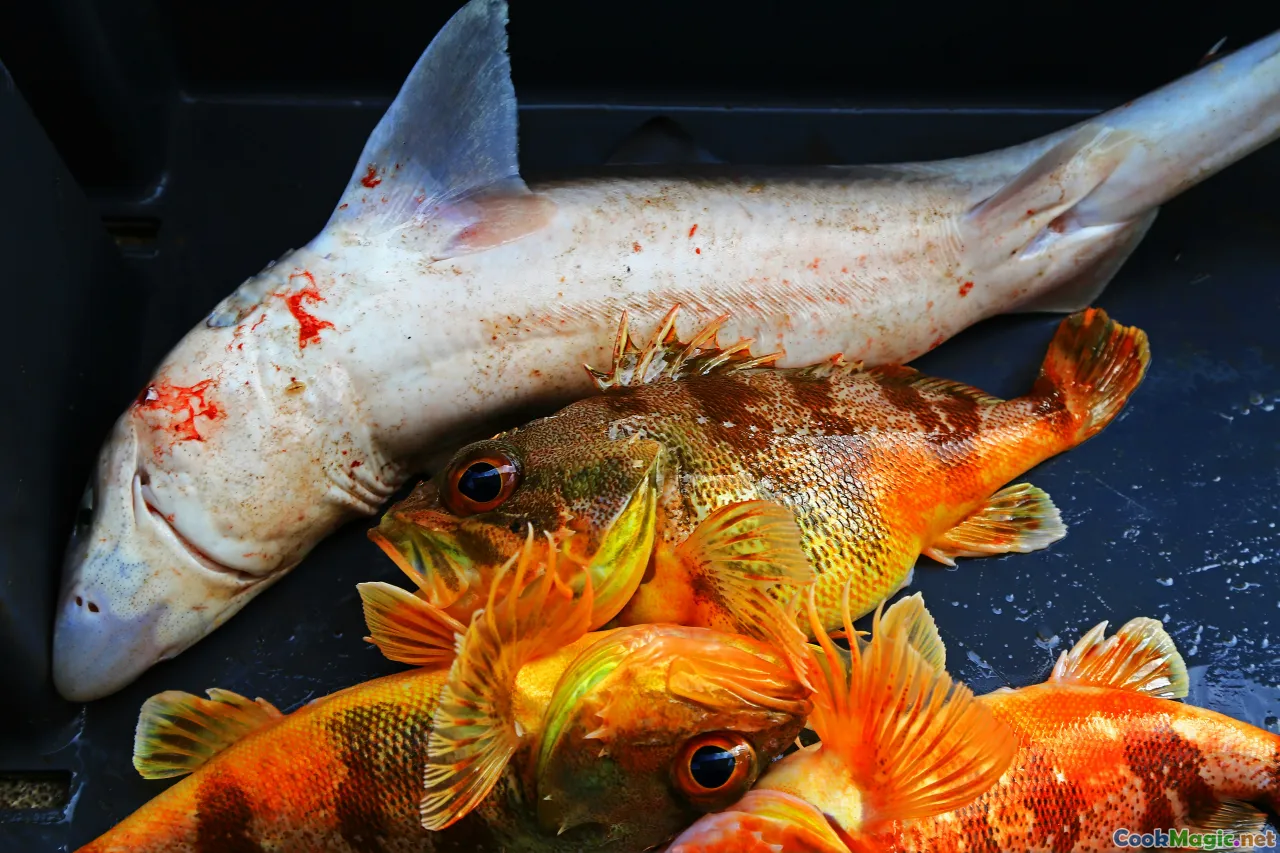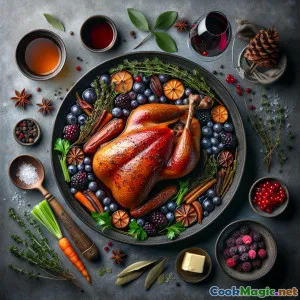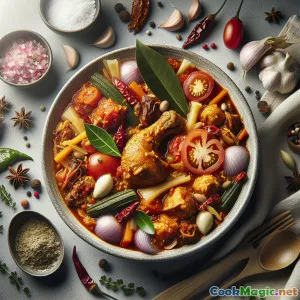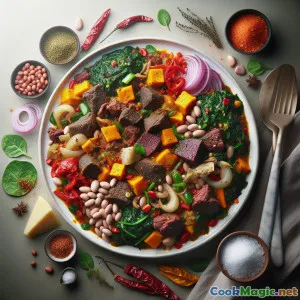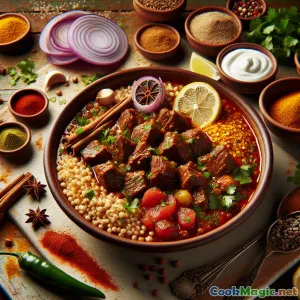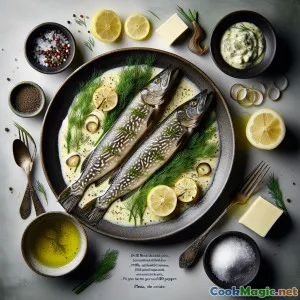
Salmão delicado do Rio Vístula em Molho Cremoso de Endro
(Delicate Vistula Pike in Creamy Dill Sauce)
(0 Avaliações)0
3,209
julho 12, 2025
Reportar um problema
Ingredientes
-
800 grams Filés de lúcio
(Fresco ou devidamente descongelado, sem pele e com ossos removidos)
-
30 grams Endro fresco
(Finamente picado)
-
200 ml Creme de leite
(Preferencialmente fresco, não ultra-pasteurizado)
-
50 grams Manteiga
(Sem sal)
-
2 tbsp Suco de limão
(Espremido na hora)
-
2 pieces Chalotas
(Bem picado)
-
100 ml Vinho branco
(Vinho branco seco)
-
150 ml Caldo de peixe
(Feito em casa ou em garrafa de qualidade)
-
1 tsp Sal
(Ajuste a gosto)
-
0.5 tsp Pimenta preta
(Moído na hora)
(Fresco ou devidamente descongelado, sem pele e com ossos removidos)
(Finamente picado)
(Preferencialmente fresco, não ultra-pasteurizado)
(Sem sal)
(Espremido na hora)
(Bem picado)
(Vinho branco seco)
(Feito em casa ou em garrafa de qualidade)
(Ajuste a gosto)
(Moído na hora)
Nutrição
- Porções: 4
- Tamanho da Porção: 1 filé com molho (aprox. 250g)
- Calories: 420 kcal
- Carbohydrates: 4 g
- Protein: 54 g
- Fat: 22 g
- Fiber: 1 g
- Sugar: 2 g
- Sodium: 450 mg
- Cholesterol: 140 mg
- Calcium: 60 mg
- Iron: 1.2 mg
Instruções
-
1 - Preparar filés de lúcio:
Seque os filés de lucioperca secos e tempere com metade do sal e pimenta-do-reino. Reserve.
-
2 - Refogar Chalotas:
Derreta a manteiga em uma frigideira em fogo médio. Adicione chalotas picadas e refogue até ficarem macias e transparentes, mas não douradas.
-
3 - Deglace e Reduza:
Despeje o vinho branco (se estiver usando) na panela para deglaçar, raspando qualquer pedacinho. Cozinhe até o líquido reduzir pela metade.
-
4 - Adicionar Caldo de Peixe e Creme:
Adicione caldo de peixe e creme de leite à panela. Leve para ferver suavemente, mexendo ocasionalmente.
-
5 - Cozinhar o lucioperca pochê:
Cuidadosamente coloque os filés de peixe-espada no molho em fervura. Cozinhe por 10-12 minutos até que o peixe se desfaça facilmente.
-
6 - Finalizar com endro e limão:
Adicione endro fresco e suco de limão ao molho. Ajuste o tempero com sal e pimenta conforme necessário. Coloque o molho sobre o peixe antes de servir.
Seque os filés de lucioperca secos e tempere com metade do sal e pimenta-do-reino. Reserve.
Derreta a manteiga em uma frigideira em fogo médio. Adicione chalotas picadas e refogue até ficarem macias e transparentes, mas não douradas.
Despeje o vinho branco (se estiver usando) na panela para deglaçar, raspando qualquer pedacinho. Cozinhe até o líquido reduzir pela metade.
Adicione caldo de peixe e creme de leite à panela. Leve para ferver suavemente, mexendo ocasionalmente.
Cuidadosamente coloque os filés de peixe-espada no molho em fervura. Cozinhe por 10-12 minutos até que o peixe se desfaça facilmente.
Adicione endro fresco e suco de limão ao molho. Ajuste o tempero com sal e pimenta conforme necessário. Coloque o molho sobre o peixe antes de servir.
Mais sobre: Salmão delicado do Rio Vístula em Molho Cremoso de Endro
Vistula River Pike in Dill Cream
The Vistula River Pike in Dill Cream dish is an elegant tribute to Poland’s rich freshwater fishing traditions and the culinary finesse of Eastern European kitchens. Pike, a bony but flavorful river fish prized for its firm white flesh, presents a unique challenge in cooking due to its texture and bones. By using fillets carefully boned and skin-removed, this recipe makes this delicacy more accessible while preserving its subtle flavors.
The use of fresh dill—a hallmark herb in Polish cuisine—paired with a rich heavy cream sauce amplifies the mild sweetness of the fish, creating an indulgent yet refined mouthfeel. Shallots sautéed in butter add a gentle aromatic base, and the optional white wine introduces acidity and depth in the sauce development. Fish stock intensifies the oceanic essence, rounding out the flavor profile perfectly.
This recipe showcases the traditional 'poaching' method which gently cooks the pike, preserving its moist, tender characteristic unlike harsh direct methods like grilling or frying. The finishing lemon juice gives a slight tangy brightness helping to lift the creaminess on the palate.
Historically, pike has been a valued catch along the Vistula River, feeding generations of Polish communities. It symbolized sustenance through colder months and featured often during celebrations. Combining simple, natural ingredients reflects the core philosophy of Polish country cooking—humble yet soulful.
Tips for success:
- Ensure pike is fresh or well thawed to retain flavor and texture.
- Be gentle during poaching and avoid letting the sauce boil to keep the cream from separating.
- Chop dill finely and add it at the end to preserve its fresh herbaceousness.
- Serve alongside lightly buttered boiled potatoes or steamed seasonal vegetables to balance richness.
This dish embodies rustic heritage paired with sophistication, making it a perfect centerpiece for dinner gatherings or holiday feasts. Its subtle interplay of fragrant herbs, delicate fish, and creamy indulgence marks it as a delicious testament to Poland’s riverine bounty and culinary heritage.


